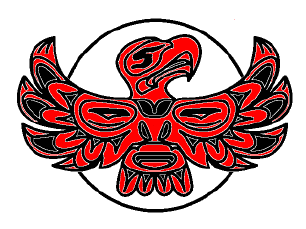Students up close with salmon at the Seymour River Hatchery

Students from Div 3 visited the Salmon Hatchery at Seymour, where coho, chum, pink, chinook, and steelhead salmon varieties are spawned and released. The initiative helps bring back salmon to a stream that has been cut off by the Seymour Falls Dam.
Cara, Division 3 teacher at Nightingale has been anticipating the opportunity to bring her class to the hatchery for over four years. “First there was COVID and then there was a long waitlist, so I’m so excited we are finally here” she exclaims.
Students had the opportunity to tour the hatchery, learn about salmon spawning, and carry out studies in the stream. In their water waders, students went knee deep in the stream and charted the temperature of the water, the PH level and the depth and width of the stream. Another group collected invertebrates from the surrounding rocks. They then went back to the lab to study the critters under microscopes. Learning about invertebrates helps students understand a bit about salmon food source and how even small changes to invertebrates can affect the entire ecosystem.
Below are pictures and quotes of the learning experience.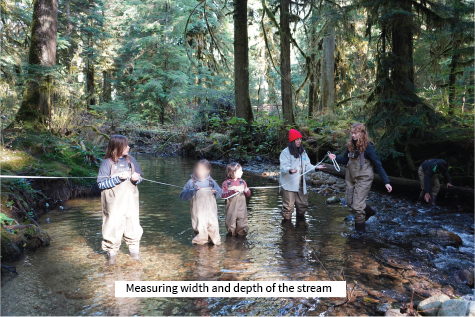
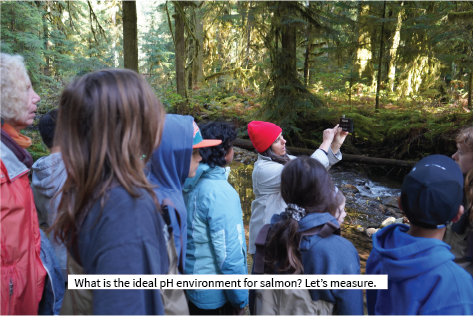

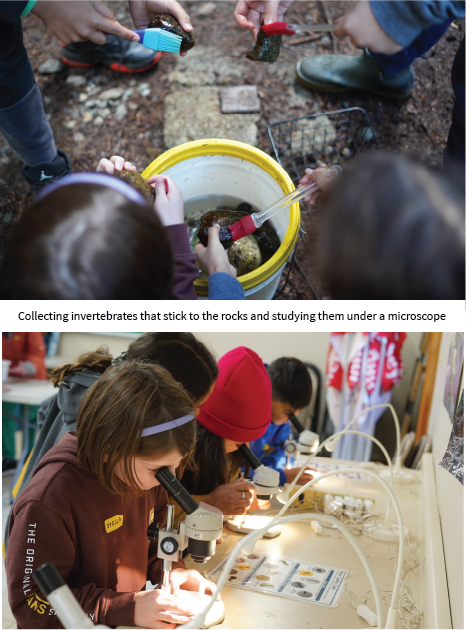
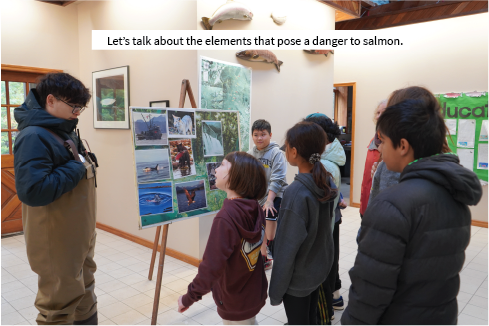

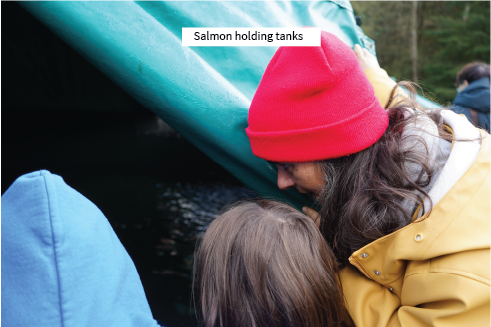
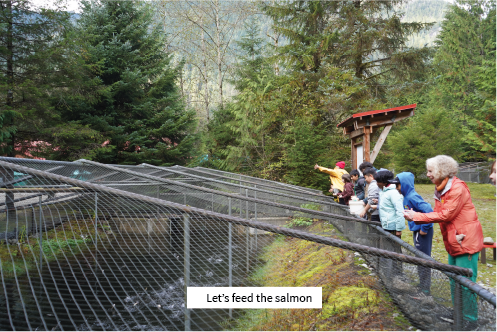
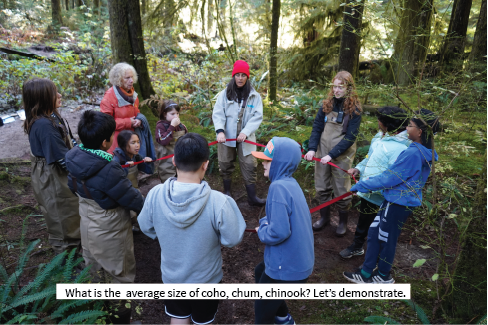
On there way back from the field trip students reflect back on what they have learned. Watch the video or read the transcript below.
“When they, cut the female coho fish, the eggs, they filter it with the males Milt”
“I thought fish needed the same water as us, but they need it 3 to 13 degrees of water.”
“Fish need a special kind of temperature and a special type of food to live, because if they don't have that, then they might not make it.”
“I learned that salmon needs, warm or cold temperatures to, you know, survive. And they have to keep moving or else they would get swept by the stream”
“I learned that salmon are forced to do something really strange into a bucket to create life..”
“I learned that salmon nests are big and that really surprised me. Like, I don't know how they could dig that much.”
“I learned that sometimes they kill salmon with a club to get all of their eggs”
“I learned that salmon eggs are very fragile. Basically, if you just poke it, it can basically get injured. I saw that happen today.”
“I learned that there are different kinds of salmon and they look different. We learned about coho and chinook and other ones”,
“I liked going in the water. I think it was very fun and I liked when I got to measure how deep the water was. I also, like, feeding the salmon. And I liked, looking at the bugs, the bugs that we collected in the water.”
“As soon as I arrived in this area, it really did feel like it was on some sort of adventure. We also got to look at all the boneless invertebrates, like mayflies, like caddis flies, even some leeches as well. And we also even got to see and feed real salmon. And we also saw all the seven models (salmon species) life sized And I really wish we could do it again.”
Being in the forest and the stream where salmon live will help build onto their understanding of salmon as they embark on their next adventure of raising salmonids in the classroom.
What's Next?
Div 3’s next adventure will be raising salmonids in their classroom. With all the knowledge they have gained, they are off to a great start!

